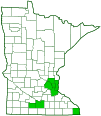Say’s trig
(Anaxipha exigua)
Conservation • Description • Habitat • Ecology • Distribution • Taxonomy
Conservation Status |
|
|||||||
| IUCN Red List | not listed |
|||||||
| NatureServe | NNR - Unranked |
|||||||
| Minnesota | not listed |
|||||||
Description |
||
There are 127 species of brown trigs (genus Anaxipha) worldwide, 13 species in North America north of Mexico. Only Say’s trig (Anaxipha exigua) has a range that extends into Minnesota. Say’s trig is a small true cricket but a large brown trig. It occurs in the eastern half on the United States from New Hampshire and Minnesota south to Florida and Texas, and in Ontario Canada. It is found on vegetation near the ground in open woodlands and old fields, on the banks of rivers and streams, and on roadsides, usually in areas with at least partial shade. Say’s trig is the largest and the most boldly marked Anaxipha in North America. Females are ¼″ to 5⁄16″ (5.8 to 8.0 mm) in length. Males are a little smaller, 3⁄16″ to ¼″ (5.6 to 6.7 mm) in length. The body is straw colored with dark brown markings. It is never green. The head is straw colored. On the top of the head there are four reddish-brown stripes; a pair of narrowly separated bold stripes in the middle, and a thinner stripe on each side that ends at the compound eye. The area between the eyes is slightly convex. The antennae are tan, thread-like, and very long, much longer than the body. They are inserted above the middle of the face. The sensory mouthparts (maxillary palps) are the same color as the head, not black. The exoskeletal plate covering the thorax (pronotum) is wider than long. There are two long, spine-like, sensory appendages (cerci) at the tip of the abdomen. On the female the ovipositor is more than 1⁄16″ (2 mm) long and is curved upward, somewhat sword-shaped. This feature is the source of one of the common names for the subfamily, “sword-bearing crickets”. At the base of the wings on the male there is a well developed row of bumps (a file) on the underside of the forewing and a sharp edge (blade) on the upper side of the hind wing. The song of the male is a continuous, uninterrupted trill. It is very loud for such a small insect. The legs are pale with dark markings. The front legs are slender, not swollen. The third segment (femur) of the hind leg has scratchy dark marking above and a bold dark stripe on the outer (lateral) face. The margins of the stripe are unbroken and sharply contrast with the background color. The fourth segment (tibia) has six large, slender spines arranged in two rows on the lower (distal) half. There are no teeth between the spines. On each spine, on the side nearest the tibia, there is a fringe of long hairs arranged in a single line. As with all true crickets, there is a flat, round, hearing organ (tympanum) at the base of The tibiae on the front leg. The tympanum is well developed. The last part of the leg (tarsus), corresponding to the foot, has only 3 segments. On the hind leg the first tarsal segment is equal to or shorter than the remaining two segments combined. The second segment is heart-shaped, compressed along its upper and lower side (dorsoventrally flattened). and hairy on the underside. The last tarsal segment has a pair of long claws. The inner surface on each claw has well developed teeth, though these can only be seen with a high quality microscope with 50X magnification. |
||
Size |
||
Male: 3⁄16″ to ¼″ (5.6 to 6.7 mm) Female: ¼″ to 5⁄16″ (5.8 to 8.0 mm) |
||
Song |
||
The song is a very loud, long, continuous trill. At 77° F the trill is at 7.2 kHz at the rate of 44 pulses per second. It is slower at lower temperatures. Though very loud, the source of the sound is difficult to determine in the field. It is best distinguished using a spectrogram. |
||
Similar Species |
||
Habitat |
||
Open woodlands, old fields, river banks, stream banks, and roadsides. |
||
Ecology |
||
Season |
||
One generation per year: late July through late October |
||
Behavior |
||
|
||
Life Cycle |
||
|
||
Food |
||
Leaves, flowers, insect eggs, and small insects |
||
Distribution |
||||
|
Sources |
|||
| 8/31/2023 | ||||
Occurrence |
||||
Relatively uncommon in Minnesota |
||||
Taxonomy |
|||
Order |
Orthoptera (grasshoppers, crickets, and katydids) |
||
Suborder |
Ensifera (katydids, crickets, and allies) | ||
| Infraorder | Gryllidea (crickets) | ||
Superfamily |
Grylloidea (true crickets and allies) | ||
Family |
Trigonidiidae (trigs, sword-tailed crickets, and ground crickets) | ||
Subfamily |
Trigonidiinae (trigs and sword-tailed crickets) | ||
| Tribe | Trigonidiini | ||
Genus |
Anaxipha (brown trigs) | ||
| Species Group | exigua | ||
Family The following sources place Trigonidiinae in the family Trigonidiidae: Catalogue of Life The following sources place Trigonidiinae in the family Gryllidae: BugGuide |
|||
Synonyms |
|||
Anaxipha pulicaria Anaxipha pulicaria pulicaria |
|||
Common Names |
|||
Say’s bush cricket Say’s trig Say’s winged bush cricket |
|||
Glossary
Femur
On insects and arachnids, the third, largest, most robust segment of the leg, coming immediately before the tibia. On humans, the thigh bone.
Maxillae
Paired mouth structures of arthropods located immediately behind the mandible and used for tasting and manipulating food. “Under-jaws”.
Palp
Short for pedipalp. A segmented, finger-like process of an arthropod; one is attached to each maxilla and two are attached to the labium. They function as sense organs in spiders and insects, and as weapons in scorpions. Plural: palpi or palps.
Pronotum
The exoskeletal plate on the upper side of the first segment of the thorax of an insect.
Tarsus
On insects, the last two to five subdivisions of the leg, attached to the tibia; the foot. On spiders, the last segment of the leg. Plural: tarsi.
Tibia
The fourth segment of an insect leg, after the femur and before the tarsus (foot). The fifth segment of a spider leg or palp. Plural: tibiae.
Visitor Photos |
|||||
Share your photo of this insect. |
|||||
| This button not working for you? Simply email us at info@MinnesotaSeasons.com. Attach one or more photos and, if you like, a caption. |
|||||
Alfredo Colon |
|||||
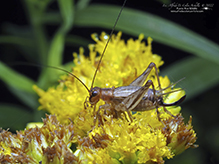 |
|||||
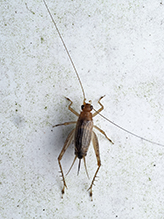 |
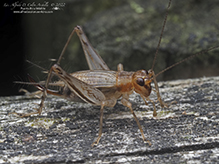 |
||||
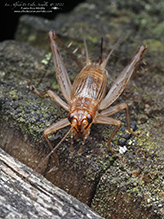 |
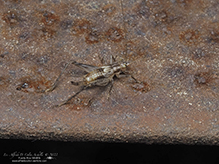 |
||||
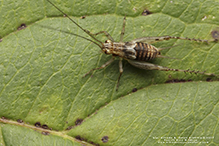 |
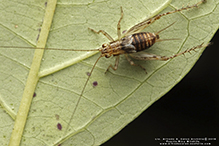 |
||||
MinnesotaSeasons.com Photos |
|||||
|
|||||

Slideshows |
||

Visitor Videos |
|||
Share your video of this insect. |
|||
| This button not working for you? Simply email us at info@MinnesotaSeasons.com. Attach a video, a YouTube link, or a cloud storage link. |
|||
Other Videos |
|||
| cricket - Anaxipha exigua seahue |
|||
About
Aug 29, 2012 The crickets, grasshoppers, katydids, etc...are in LARGE numbers this year....I went outside at 2am and the sound was deafening.... Normally crickets creep me out (Gentlemen prefer katydids) but this one I found to be cute...this is the first time I've seen this type of cricket.... I'm pretty sure it is a Anaxipha exigua...correct me if I'm wrong.... |
|||


Created: 11/27/2020
Last Updated:
